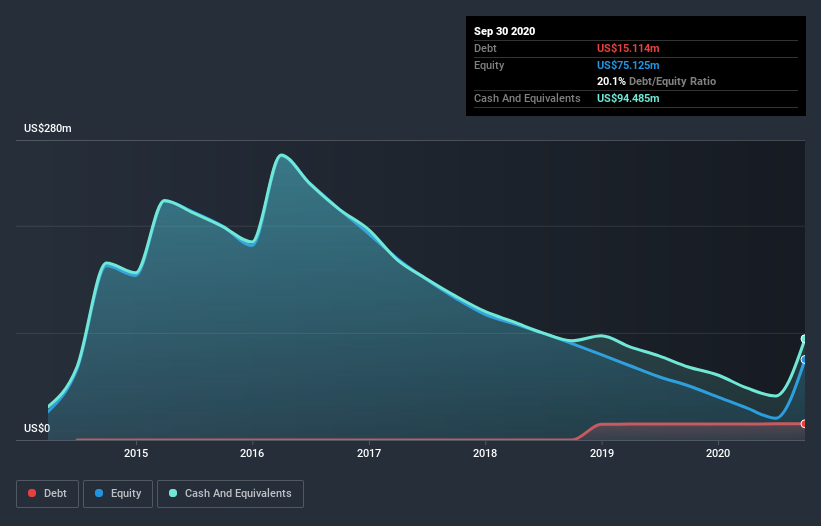Is Otonomy (NASDAQ:OTIC) Weighed On By Its Debt Load?
Legendary fund manager Li Lu (who Charlie Munger backed) once said, 'The biggest investment risk is not the volatility of prices, but whether you will suffer a permanent loss of capital.' So it seems the smart money knows that debt - which is usually involved in bankruptcies - is a very important factor, when you assess how risky a company is. We can see that Otonomy, Inc. (NASDAQ:OTIC) does use debt in its business. But is this debt a concern to shareholders?
What Risk Does Debt Bring?
Debt and other liabilities become risky for a business when it cannot easily fulfill those obligations, either with free cash flow or by raising capital at an attractive price. Part and parcel of capitalism is the process of 'creative destruction' where failed businesses are mercilessly liquidated by their bankers. However, a more usual (but still expensive) situation is where a company must dilute shareholders at a cheap share price simply to get debt under control. Of course, debt can be an important tool in businesses, particularly capital heavy businesses. When we think about a company's use of debt, we first look at cash and debt together.
See our latest analysis for Otonomy
How Much Debt Does Otonomy Carry?
The chart below, which you can click on for greater detail, shows that Otonomy had US$15.1m in debt in September 2020; about the same as the year before. But it also has US$94.5m in cash to offset that, meaning it has US$79.4m net cash.
How Healthy Is Otonomy's Balance Sheet?
According to the last reported balance sheet, Otonomy had liabilities of US$10.8m due within 12 months, and liabilities of US$29.3m due beyond 12 months. Offsetting these obligations, it had cash of US$94.5m as well as receivables valued at US$48.0k due within 12 months. So it actually has US$54.3m more liquid assets than total liabilities.
This excess liquidity suggests that Otonomy is taking a careful approach to debt. Because it has plenty of assets, it is unlikely to have trouble with its lenders. Simply put, the fact that Otonomy has more cash than debt is arguably a good indication that it can manage its debt safely. There's no doubt that we learn most about debt from the balance sheet. But ultimately the future profitability of the business will decide if Otonomy can strengthen its balance sheet over time. So if you want to see what the professionals think, you might find this free report on analyst profit forecasts to be interesting.
Given it has no significant operating revenue at the moment, shareholders will be hoping Otonomy can make progress and gain better traction for the business, before it runs low on cash.
So How Risky Is Otonomy?
By their very nature companies that are losing money are more risky than those with a long history of profitability. And we do note that Otonomy had an earnings before interest and tax (EBIT) loss, over the last year. And over the same period it saw negative free cash outflow of US$38m and booked a US$45m accounting loss. However, it has net cash of US$79.4m, so it has a bit of time before it will need more capital. Even though its balance sheet seems sufficiently liquid, debt always makes us a little nervous if a company doesn't produce free cash flow regularly. The balance sheet is clearly the area to focus on when you are analysing debt. But ultimately, every company can contain risks that exist outside of the balance sheet. These risks can be hard to spot. Every company has them, and we've spotted 4 warning signs for Otonomy (of which 2 are concerning!) you should know about.
When all is said and done, sometimes its easier to focus on companies that don't even need debt. Readers can access a list of growth stocks with zero net debt 100% free, right now.
This article by Simply Wall St is general in nature. It does not constitute a recommendation to buy or sell any stock, and does not take account of your objectives, or your financial situation. We aim to bring you long-term focused analysis driven by fundamental data. Note that our analysis may not factor in the latest price-sensitive company announcements or qualitative material. Simply Wall St has no position in any stocks mentioned.
Have feedback on this article? Concerned about the content? Get in touch with us directly. Alternatively, email editorial-team (at) simplywallst.com.

